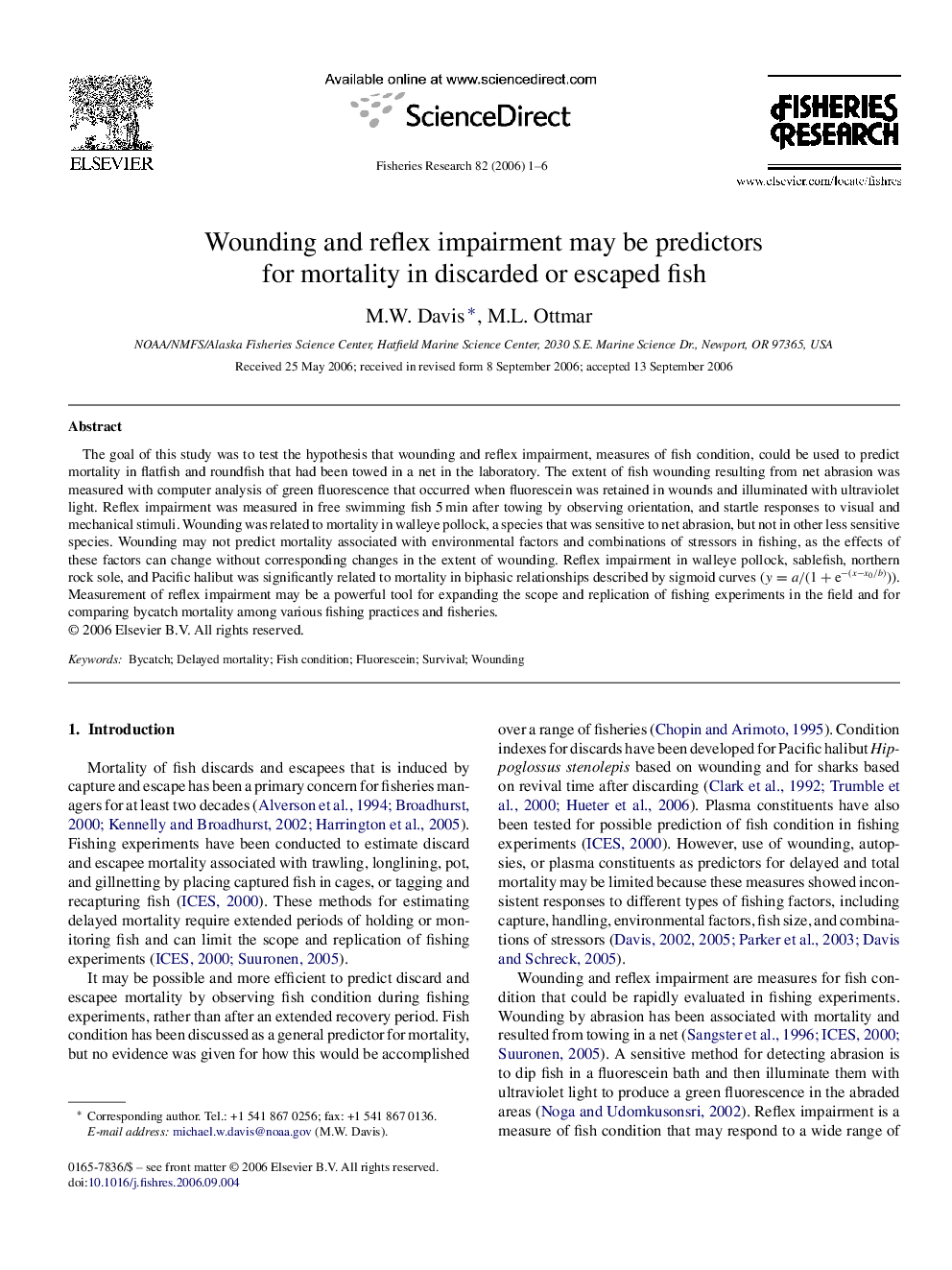| Article ID | Journal | Published Year | Pages | File Type |
|---|---|---|---|---|
| 4544819 | Fisheries Research | 2006 | 6 Pages |
The goal of this study was to test the hypothesis that wounding and reflex impairment, measures of fish condition, could be used to predict mortality in flatfish and roundfish that had been towed in a net in the laboratory. The extent of fish wounding resulting from net abrasion was measured with computer analysis of green fluorescence that occurred when fluorescein was retained in wounds and illuminated with ultraviolet light. Reflex impairment was measured in free swimming fish 5 min after towing by observing orientation, and startle responses to visual and mechanical stimuli. Wounding was related to mortality in walleye pollock, a species that was sensitive to net abrasion, but not in other less sensitive species. Wounding may not predict mortality associated with environmental factors and combinations of stressors in fishing, as the effects of these factors can change without corresponding changes in the extent of wounding. Reflex impairment in walleye pollock, sablefish, northern rock sole, and Pacific halibut was significantly related to mortality in biphasic relationships described by sigmoid curves (y=a/(1+e−(x−x0/b)))(y=a/(1+e−(x−x0/b))). Measurement of reflex impairment may be a powerful tool for expanding the scope and replication of fishing experiments in the field and for comparing bycatch mortality among various fishing practices and fisheries.
